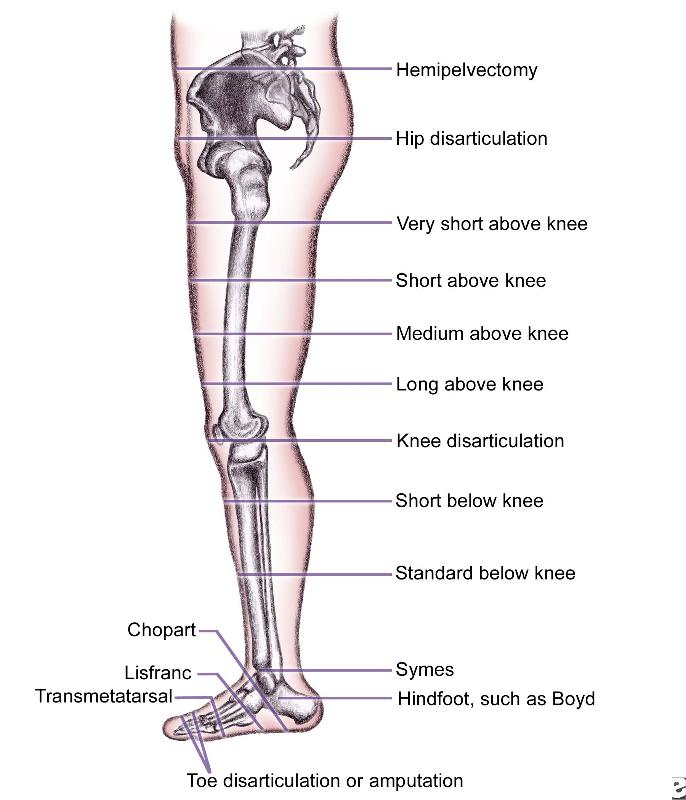Preoperative Considerations
Prior to an amputation, physical therapy provides education in cardiovascular conditioning, therapeutic exercises (upper and lower extremity) for gait, pivot and wheelchair transfers including the use of slideboards as needed, positioning for contracture prevention and management, and initiates instruction in skin/stump care to be carried forward post amputation. Close coordination with the certified Prosthetist will help plan for the definitive prosthesis and physical therapy should coordinate with social work and counseling as needed to help the patient with psychological impacts of preparing for limb loss. The treatment team works with the patient to develop rapport, reduce anxiety, and help set realistic goals
Types of Lower Extremity Amputation

Terminology associated with lower extremity amputation will change depending on the source and audience. For example, transpelvic amputation is commonly known as a hemipelvectomy. A BKA (below knee amputation) is referred to in the literature as a transtibial amputation and an AKA (above knee amputation) is referred to as a transfemoral amputation. A PTA is likely to find references to AKA and BKA , as well as "trans-" in the patient's medical record.
